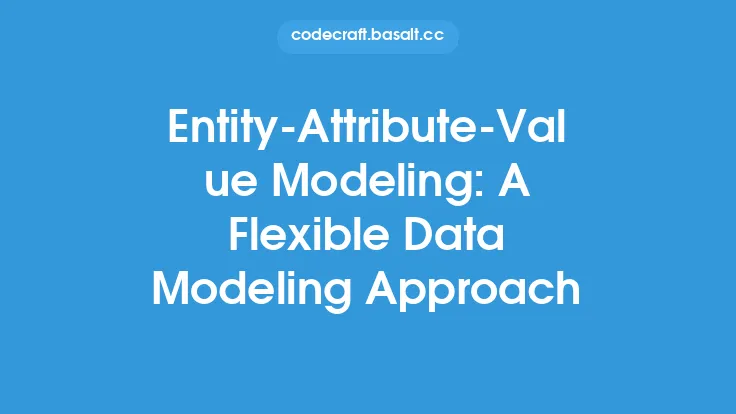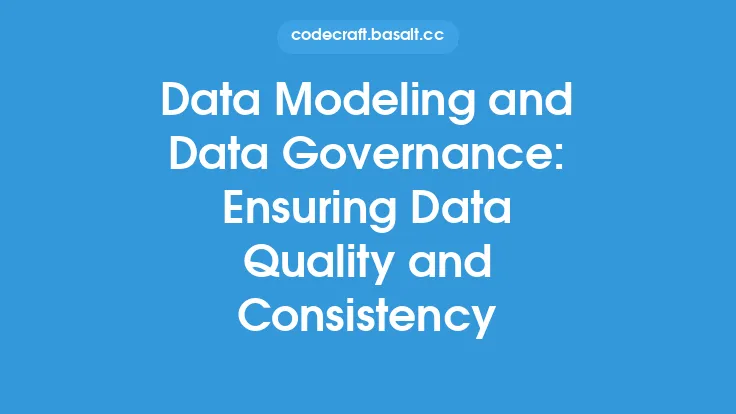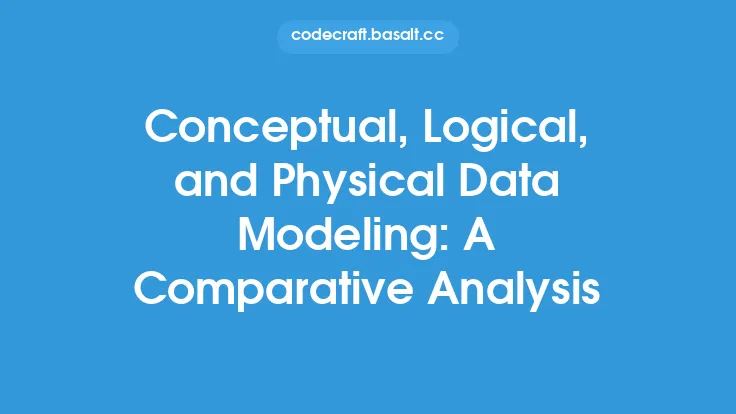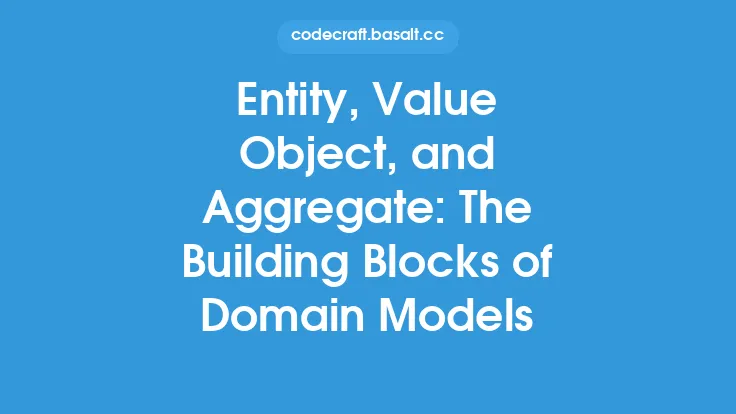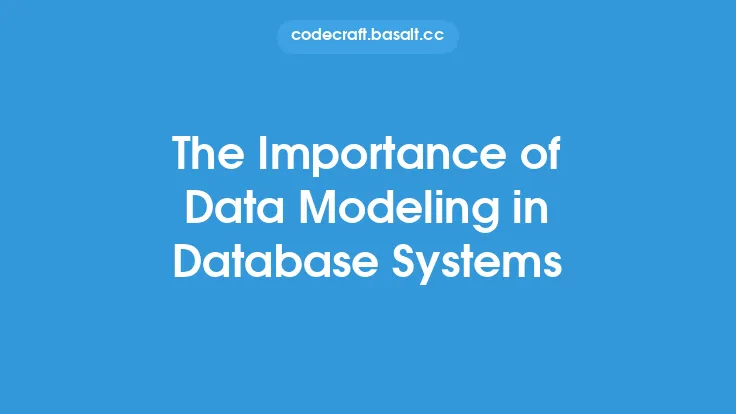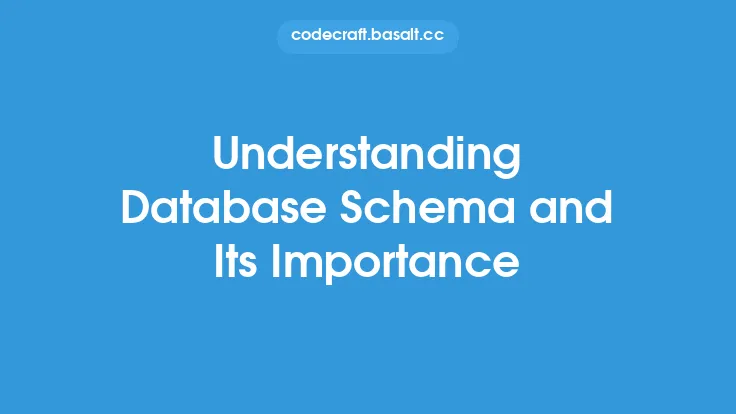Understanding the basics of data modeling is crucial for designing and implementing efficient database systems. At the heart of data modeling lies the entity-relationship model, a fundamental concept that helps organize and structure data in a way that is easy to understand and manage. In this article, we will delve into the world of entity-relationship models, exploring their components, types, and applications.
Introduction to Entity-Relationship Models
An entity-relationship model is a graphical representation of entities and their relationships, used to describe the structure of a database. It consists of three main components: entities, attributes, and relationships. Entities are objects or concepts that have independent existence, such as customers, orders, or products. Attributes are the characteristics or properties of entities, like customer name, order date, or product price. Relationships, on the other hand, describe how entities interact with each other, such as a customer placing an order or a product being part of an order.
Components of Entity-Relationship Models
Entities are the core of an entity-relationship model, representing real-world objects or concepts. They can be classified into two types: strong entities and weak entities. Strong entities have a unique identifier, known as a primary key, and can exist independently. Weak entities, however, rely on other entities for their existence and do not have a primary key. For example, an order item is a weak entity because it cannot exist without an order.
Attributes are the properties or characteristics of entities, providing more information about them. They can be classified into two types: simple attributes and composite attributes. Simple attributes are single values, like a customer's name, while composite attributes are made up of multiple values, such as a customer's address, which consists of street, city, state, and zip code.
Relationships are the connections between entities, describing how they interact with each other. There are three types of relationships: one-to-one, one-to-many, and many-to-many. A one-to-one relationship exists when one entity is related to only one other entity, such as a customer having only one address. A one-to-many relationship occurs when one entity is related to multiple other entities, like a customer having multiple orders. A many-to-many relationship exists when multiple entities are related to multiple other entities, such as a product being part of multiple orders and an order containing multiple products.
Types of Entity-Relationship Models
There are several types of entity-relationship models, each with its own strengths and weaknesses. The most common types are:
- Conceptual entity-relationship model: This type of model is used to describe the overall structure of a database, focusing on the high-level entities and relationships. It is often used in the early stages of database design to identify the key entities and relationships.
- Logical entity-relationship model: This type of model is used to describe the detailed structure of a database, including the attributes and relationships of each entity. It is often used to refine the conceptual model and prepare it for physical implementation.
- Physical entity-relationship model: This type of model is used to describe the actual implementation of a database, including the physical storage and access methods. It is often used to optimize the performance and security of the database.
Applications of Entity-Relationship Models
Entity-relationship models have a wide range of applications in database design and development. They are used to:
- Design databases: Entity-relationship models are used to design and implement databases, ensuring that the data is organized and structured in a way that is easy to understand and manage.
- Improve data integrity: Entity-relationship models help to improve data integrity by identifying the relationships between entities and ensuring that the data is consistent and accurate.
- Support data analysis: Entity-relationship models provide a framework for data analysis, allowing users to query and analyze the data in a way that is meaningful and useful.
- Enhance data security: Entity-relationship models help to enhance data security by identifying the sensitive data and ensuring that it is protected and access-controlled.
Best Practices for Creating Entity-Relationship Models
Creating effective entity-relationship models requires a combination of technical skills and business knowledge. Here are some best practices to keep in mind:
- Start with a clear understanding of the business requirements: Before creating an entity-relationship model, it is essential to have a clear understanding of the business requirements and the data that needs to be stored and managed.
- Use a consistent notation: Consistency is key when creating entity-relationship models. Use a consistent notation and terminology to avoid confusion and ensure that the model is easy to understand.
- Keep it simple: Entity-relationship models should be simple and easy to understand. Avoid unnecessary complexity and focus on the key entities and relationships.
- Use entity-relationship modeling tools: There are many entity-relationship modeling tools available, such as ERwin, Entity Framework, and MySQL Workbench. These tools can help to create and manage entity-relationship models, making it easier to design and implement databases.
Common Challenges and Limitations
While entity-relationship models are a powerful tool for designing and implementing databases, there are some common challenges and limitations to be aware of:
- Complexity: Entity-relationship models can become complex and difficult to understand, especially for large databases.
- Scalability: Entity-relationship models may not be scalable, making it difficult to add new entities and relationships as the database grows.
- Data redundancy: Entity-relationship models can lead to data redundancy, where the same data is stored in multiple places.
- Data inconsistency: Entity-relationship models can lead to data inconsistency, where the data is not consistent across the database.
Conclusion
Entity-relationship models are a fundamental concept in data modeling, providing a framework for organizing and structuring data in a way that is easy to understand and manage. By understanding the components, types, and applications of entity-relationship models, database designers and developers can create effective databases that meet the needs of their users. While there are some common challenges and limitations to be aware of, entity-relationship models remain a powerful tool for designing and implementing databases.
